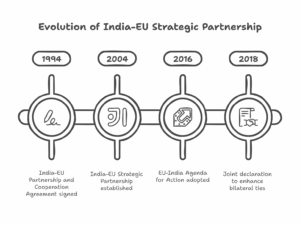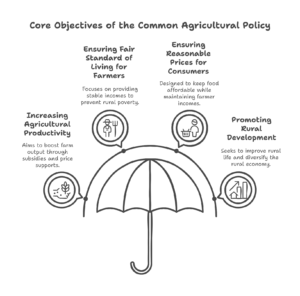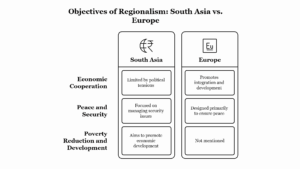Pressure groups (also known as interest groups or lobby groups) play a significant role in the Canadian political system by influencing public policy, representing the interests of specific groups, and promoting particular issues within the political arena. These organizations operate outside the formal structures of government, yet they actively engage in political processes to shape legislation and government decisions. In Canada, pressure groups contribute to the pluralist political system, where multiple voices and interests compete for attention in the political landscape.
1. Role and Functions of Pressure Groups:
Pressure groups in Canada perform a variety of functions aimed at influencing political outcomes. They typically work through a combination of lobbying, advocacy, public campaigns, and legal challenges to promote their causes. The key functions of pressure groups in Canada can be categorized as follows:
1.1 Advocacy and Lobbying:
Pressure groups in Canada engage in advocacy by raising awareness about specific issues and advocating for changes in laws, policies, and government actions. Lobbying is one of the most common methods used by these groups to influence politicians and government officials. This can involve direct communication with elected representatives, public officials, and government bureaucrats to present the group’s views on particular policies or legislative proposals.
- Example: The Canadian Cancer Society regularly lobbies the government for increased funding for cancer research and to pass laws aimed at reducing cancer risk, such as smoking regulations and health warnings on tobacco products.
1.2 Public Campaigns:
Pressure groups often organize public campaigns to generate public support for their issues. These campaigns can include advertising, public rallies, social media efforts, and petitions to raise awareness and mobilize citizens to pressure lawmakers to act. By drawing attention to particular issues, pressure groups aim to build public sentiment, which in turn can influence politicians who are sensitive to voter concerns.
- Example: Environmental groups like David Suzuki Foundation have run public campaigns advocating for climate change action and stronger environmental protection laws, rallying citizens to pressure government officials for policy changes.
1.3 Litigation and Legal Challenges:
Some pressure groups in Canada resort to litigation as a means of advancing their causes. They may challenge government actions or policies in court if they believe that these actions violate constitutional principles or individual rights. Legal challenges can be a powerful tool for forcing government institutions to address specific issues, especially when pressure groups claim that legislation or executive decisions harm particular groups or the environment.
- Example: The Canadian Civil Liberties Association (CCLA) has often been involved in litigating against policies or laws it believes infringe upon fundamental rights guaranteed by the Canadian Charter of Rights and Freedoms.
2. Types of Pressure Groups:
Pressure groups in Canada can be broadly categorized based on their objectives and the interests they represent. These categories include:
2.1 Interest-based Pressure Groups:
These groups are formed to represent the interests of a specific segment of society, often related to economic or professional concerns. Trade unions, business associations, and professional organizations are prime examples of interest-based groups. These groups often focus on issues related to labor rights, wages, working conditions, industry regulations, and market access.
- Example: The Canadian Labour Congress (CLC) is one of the largest labor organizations in Canada, representing trade unions and advocating for workers’ rights, better wages, and improved working conditions.
2.2 Cause-based Pressure Groups:
Cause-based groups are often founded to advocate for a specific cause or to address social issues. These groups may focus on environmental protection, human rights, social justice, or public health. They typically operate on principles of advocacy and mobilization, seeking to influence public opinion and government policies on specific issues.
- Example: The Greenpeace Canada pressure group is dedicated to environmental causes, including the protection of forests, oceans, and wildlife, and fighting climate change.
2.3 Ideological Pressure Groups:
Ideological pressure groups are driven by specific political or social ideologies and aim to shape policy in accordance with their ideological goals. These groups advocate for changes in the political system, often aiming to influence the public discourse or the direction of political movements in Canada.
- Example: The Canadian Federation of Independent Business (CFIB) represents the interests of small and medium-sized businesses and advocates for free-market policies and lower taxes.
2.4 Professional Associations:
These groups represent the interests of individuals within a particular profession or occupation, seeking to advance their members’ professional and economic interests. They often focus on issues like educational standards, licensing, workplace regulations, and professional conduct.
- Example: The Canadian Medical Association (CMA) represents physicians and advocates for healthcare policies that support medical professionals and ensure adequate healthcare services.
3. Impact of Pressure Groups on Canadian Politics:
Pressure groups in Canada have a significant impact on policy-making and public debate, especially in areas where their issues align with public concerns or where they are able to mobilize large segments of the population.
3.1 Influence on Legislation and Policy:
Pressure groups often play a role in shaping legislation by working directly with legislators, providing expert opinions, conducting policy research, and suggesting policy alternatives. Lawmakers, especially those who depend on votes from particular constituencies, may be swayed by the arguments and evidence presented by pressure groups, particularly when these groups represent the interests of a large voting block or important economic sectors.
- Example: The Canadian Association of Petroleum Producers (CAPP) has exerted significant influence over energy policy and has been an important voice in shaping discussions on oil and gas exploration, pipeline development, and environmental regulations.
3.2 Shaping Public Opinion:
Pressure groups influence public opinion by framing issues in ways that resonate with the public. By leveraging media, public campaigns, and community engagement, these groups help shape the public’s perception of issues and create pressure on politicians to act.
- Example: The Amnesty International Canada chapter works to raise awareness of human rights abuses worldwide and influence Canadian foreign policy decisions related to international human rights.
3.3 Institutionalizing Influence:
Some pressure groups, particularly those with significant financial resources or public support, have the capacity to influence institutional changes. For instance, corporate interest groups and labour unions have historically had the ability to establish policy networks, participate in government consultations, and influence the design of policy frameworks in various sectors, such as healthcare, transportation, and agriculture.
4. Challenges Faced by Pressure Groups:
Despite their influence, pressure groups in Canada face several challenges. These challenges include:
4.1 Competition among Groups:
There are often multiple pressure groups representing the same issue, creating competition for attention, resources, and political support. This competition can dilute the effectiveness of individual groups and may lead to conflicts within the same sector.
4.2 Public Perception:
Pressure groups may sometimes face negative public perceptions, especially if they are seen as self-serving or if their agendas conflict with broader public interests. Groups may also be accused of exerting too much influence over politicians and policy-making, undermining the democratic process.
4.3 Funding and Resources:
Larger and wealthier groups often have more access to resources, which can make it difficult for smaller, grassroots organizations to compete on equal terms. This disparity in resources can limit the influence of certain pressure groups, particularly those advocating for marginalized communities.
Conclusion:
Pressure groups are an integral part of the Canadian political system, serving as essential actors in shaping public policy, representing the interests of various groups, and advocating for changes in the political landscape. They play a critical role in the pluralist democracy of Canada by providing avenues for political participation, influencing legislation, and contributing to the broader policy dialogue. However, the effectiveness of pressure groups depends on their ability to organize, mobilize support, and navigate challenges related to resources, competition, and public perception. Ultimately, pressure groups contribute to ensuring that diverse voices are heard in the Canadian political process.







Leave a Reply